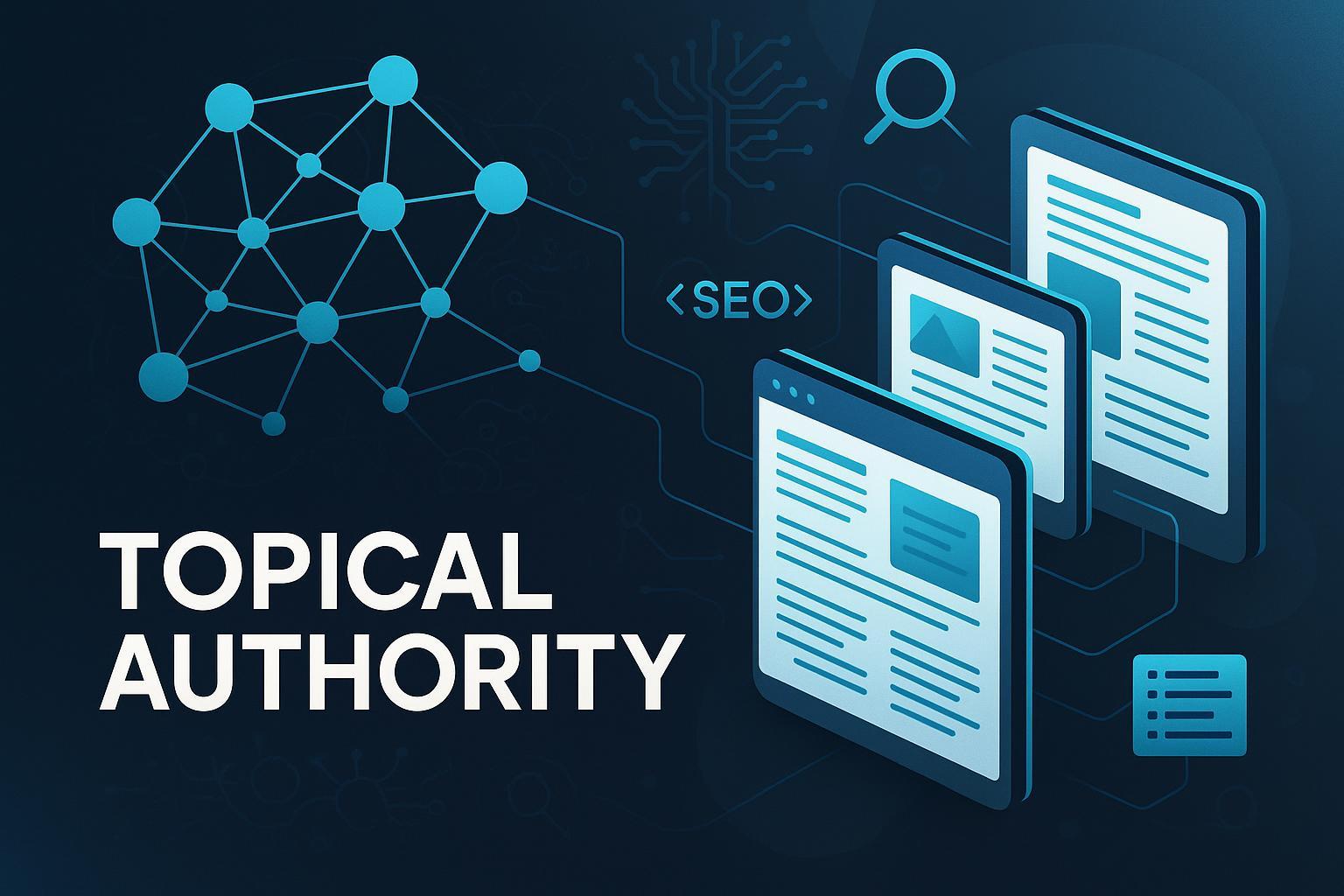Best AI SEO Tools to Build Topical Authority in 2025

If you’re trying to win topic clusters, capture entity relationships, and ship consistent, helpful content in 2025, your tool stack matters. Topical authority isn’t just “more articles.” It’s structured coverage of a subject (pillar + clusters), semantic breadth (entities, definitions, related concepts), and a connected internal link graph that helps users and crawlers navigate the topic.
Below is a curated set of AI SEO tools grouped by function—mapping/clustering, semantic content optimization, entity and internal linking, and execution. For each, you’ll get who it’s for, practical implementation tips, and pitfalls to avoid. I’ve kept the list to tools with 2024–2025-ready capabilities and reliable references.
How we picked:
- Must directly help build topical authority via topical maps, semantic/NLP optimization, entity/schema rigor, or internal linking automation.
- Current capabilities with 2024–2025 materials. When citing specific features, links go to canonical pages.
- Pragmatic workflows, not just feature checklists.
A) Topical Map & Keyword Clustering
1) SearchAtlas Topical Maps (LinkGraph)
What it does for topical authority
- Converts a seed topic into a structured topical map with keyword clusters and long-tail variants—use it to design pillar/cluster architectures and an editorial calendar.
- Helps you plan link relationships (pillar ↔ cluster and cluster ↔ cluster) so your internal linking supports semantic SEO.
Why it stands out in 2024–2025
- LinkGraph’s team documents how to generate and export clusters and titles from the topical map workflow; you can build a spreadsheet that includes ownership, target URLs, and anchors, then execute systematically, as shown in their 2024–2025 materials on SearchAtlas Topical Maps.
Who it’s for
- SEO leads who need to scale topic clusters across a site or multiple properties.
- Agencies building repeatable, client-friendly content roadmaps.
How to implement (mini workflow)
- Input your core topic into the Topical Map Generator and specify how many cluster groups and long-tail ideas you want.
- Export to Sheets; add metadata: owner, draft date, target URL, title/slug, anchor plan, schema type (if applicable).
- Validate each cluster against live SERPs before briefing. Prune ambiguous intents; consolidate near-duplicates.
Pitfalls to avoid
- Over-trusting AI map titles—rewrite to match search intent and brand voice.
- Not mapping internal links at the planning stage—define pillar/child/sibling anchors before writing.
Further reading and context
- LinkGraph’s strategy articles discuss cluster architecture and linking patterns inside the SearchAtlas ecosystem (2024–2025), e.g., internal linking in cluster strategy on SEO strategy guidance and editorial planning in SEO content planning.
B) NLP/Semantic Content Optimization Editors
2) MarketMuse
What it does for topical authority
- Governs coverage across an entire topic area: AI-driven topic modeling, content briefs, and an always-on content inventory so you know what to create next and where your gaps are.
Why it stands out in 2024–2025
- MarketMuse emphasizes a continuous content inventory (no manual “one-off” audits) to monitor topic coverage and quality, detailed in the 2024–2025 write-up on content inventory software for strategists.
- Their guidance on what topic clusters are and topical depth makes it easier to brief writers for semantic SEO rather than keyword stuffing.
Who it’s for
- Teams managing dozens or hundreds of URLs where prioritization and governance are critical.
How to implement
- Crawl/import your site to populate the content inventory; triage pages by coverage gaps and authority-building potential.
- For each cluster, generate content briefs that include target subtopics, entity definitions, headings, and examples.
- After publishing, revisit the inventory monthly to spot gaps and update target pages.
Pitfalls to avoid
- Treating suggested terms as a checklist—over-optimization can hurt readability and trust.
- Letting briefs go stale—refresh quarterly as SERP formats and AI Overviews evolve (FAQs, comparison blocks, etc.).
3) NeuronWriter
What it does for topical authority
- Adds entity-first thinking to drafting and editing: entity suggestions, synonyms to diversify language without drifting meaning, and content scoring to keep intent on track.
Why it stands out in 2024–2025
- Clear, up-to-date resources on entities and semantic coverage, including the 2025-focused guide on SEO content strategies for success in 2025 and the explainer on entities in SEO.
- Draft faster with Generative AI and Content Designer, then refine with NLP and the Synonyms feature to increase semantic richness without stuffing.
Who it’s for
- Solo creators and SMB teams that want a budget-friendly semantic editor to tighten outlines and drafts.
How to implement
- Spin up an initial draft via Generative AI using your cluster brief.
- Optimize with entity suggestions; ensure consistent naming/definitions across the cluster.
- Use the content score to sanity-check intent alignment before you publish.
Pitfalls to avoid
- Letting generation lead the strategy—your topical map and brief should drive the draft, not the other way around.
4) Ahrefs — AI Content Helper
What it does for topical authority
- Speeds up on-page optimization with AI-assisted topic coverage suggestions relative to competitors, so your pillar and cluster pages meet SERP expectations.
Why it stands out in 2024–2025
- Ahrefs documents its AI features and where to access them across the platform; see their 2024–2025 overview of where to find all AI features in Ahrefs and product posts on new capabilities like the September 2024 updates.
- Their editorial guides cover AI-assisted creation and optimization workflows, e.g., the 2024–2025 piece on AI content creation tools.
Who it’s for
- Teams already living in Ahrefs for research that want in-editor guidance without learning a new tool.
How to implement
- Enter your target keyword and (optionally) a draft URL to get AI suggestions on topics to cover.
- Refine headings/sections to close gaps with current leaders.
- Re-run suggestions during revisions and before final publish.
Pitfalls to avoid
- Blindly following AI prompts—always validate against top-ranking pages and your original search intent.
C) Entity SEO, Schema, and Internal Linking
5) SearchAtlas (Internal Linking within Clusters)
What it does for topical authority
- Reinforces your topic clusters with planned, descriptive anchors between pillar and child pages and across sibling pages.
Why it stands out in 2024–2025
- LinkGraph’s SearchAtlas resources outline how internal linking fits the cluster methodology—plan anchors first, then implement as you publish, as discussed in their 2024–2025 articles on SEO strategy and SEO content planning.
Who it’s for
- Teams who want cluster-friendly linking workflows tied directly to their topical map exports.
How to implement
- From your topical map export, mark pillar ↔ cluster and sibling relationships. Assign 2–3 anchor variations per link (exact, partial, descriptive).
- As each page ships, implement links immediately; keep a running log in your sheet.
- Re-crawl quarterly; rebalance anchors and add links from new pages to older cluster assets.
Pitfalls to avoid
- Over-automation leading to repetitive, over-optimized anchors. Mix anchors and link from natural, helpful contexts.
- Forgetting lateral (sibling) links—those reinforce depth and improve navigation.
D) All-in-One / Execution Hub
6) QuickCreator (AI blogging + SERP/topic recommendations)
What it does for topical authority
- Serves as the execution layer: draft cluster content with AI assistance, use real-time SERP/topic recommendations while writing, and publish fast—without heavy CMS ops.
Why it stands out in 2024–2025
- The platform combines AI-driven writing, an intuitive block-based editor, automatic on-page SEO optimization informed by SERP analysis, and multilingual generation—plus team collaboration, free hosting, and one-click WordPress publishing, as described on QuickCreator’s homepage.
- Embeds images/audio/video via APIs and includes analytics so you can iterate on cluster performance.
Who it’s for
- SMBs, agencies, and solo creators who need to publish high-quality, SEO-friendly content consistently without dev help.
How to implement
- Bring in your topical map (from SearchAtlas) and create briefs/drafts page by page.
- Use SERP/topic suggestions in-editor to tighten outlines and entity coverage.
- Publish to a QuickCreator-hosted blog or push to WordPress with one click; monitor analytics and iterate.
Pitfalls to avoid
- Assuming it handles schema or internal linking out of the box—pair with dedicated schema/internal linking tools if needed.
- Over-automating drafts—ensure every page serves a distinct intent in your cluster.
How to stack these tools for maximum topical authority
A practical 7-step workflow you can run quarter after quarter:
- Map the territory: Generate cluster ideas with SearchAtlas Topical Maps; export to a spreadsheet with ownership, targets, anchors, and schema candidates.
- Shape the information architecture: Define pillar ↔ cluster and sibling relationships and add them to your map sheet.
- Brief smartly: Use MarketMuse to identify gaps and generate briefs focusing on entity coverage and examples users actually need.
- Draft and optimize: Draft in QuickCreator; tighten with NeuronWriter’s entity and synonym suggestions; pressure-test coverage with Ahrefs’ AI Content Helper.
- Bake in semantics: Use consistent entity names and definitions across the cluster; add FAQs and examples to deepen topical depth.
- Link as you publish: Implement internal links from day one following your map; use SearchAtlas workflows to keep anchors varied and natural.
- Review and expand: Monthly, check cluster performance and gaps (MarketMuse inventory + QuickCreator analytics); quarterly, revisit SERPs and update briefs/links.
Common pitfalls (and how to avoid them)
- Overreliance on AI maps: Generators are starting points, not gospel. Validate clusters with live SERPs and user intent. If two topics answer the same intent, merge them.
- Semantic SEO ≠ stuffing: Use NLP editors to guide coverage, not dictate prose. If a suggested term doesn’t add clarity, skip it.
- Entity drift: Keep names, definitions, and relationships consistent across all pages in a cluster. Reuse canonical definitions.
- Neglecting internal linking: Plan anchors during briefing, then automate only where you can maintain quality. Manually QA your top pages.
- Stale assumptions: SERPs change. Recheck quarterly as AI Overviews and formats evolve; update briefs and interlinking accordingly.
What to measure at the cluster level
- Coverage and depth: How many planned entities/subtopics have live, high-quality pages? Are key questions answered?
- Interlinking health: Density and balance of pillar ↔ cluster and sibling links; anchor diversity; crawl depth.
- SERP outcomes: Impressions, clicks, and average position by cluster; featured snippets/People Also Ask capture.
- Content quality signals: Engagement (scroll depth, time on page), update cadence, and internal link CTR.
Final word
You don’t need a bloated stack to build topical authority in 2025. Start with a reliable mapper (SearchAtlas), a governance-grade optimizer (MarketMuse), a semantic editor (NeuronWriter), a familiar gap-checker (Ahrefs), a linking workflow (SearchAtlas), and an execution hub (QuickCreator). Ship helpful, interlinked content page by page—and review your clusters on a predictable cadence.
Soft CTA for readers who need execution speed: If you already have your cluster plan, you can draft, optimize, and publish fast using QuickCreator while pairing it with the mapping and linking tools above.

